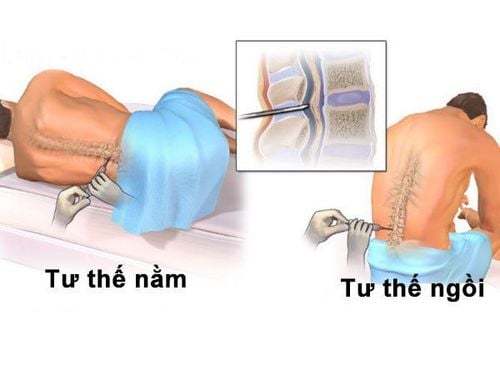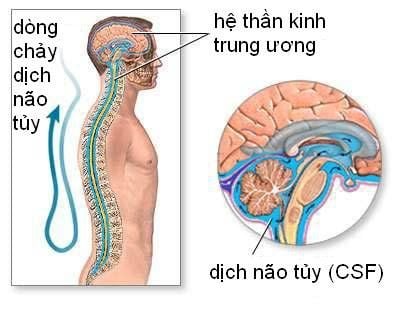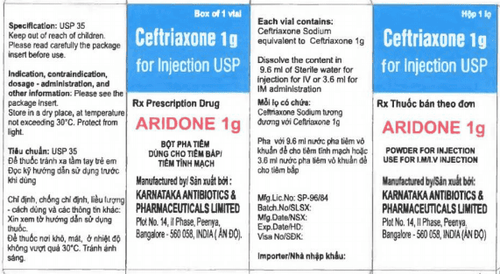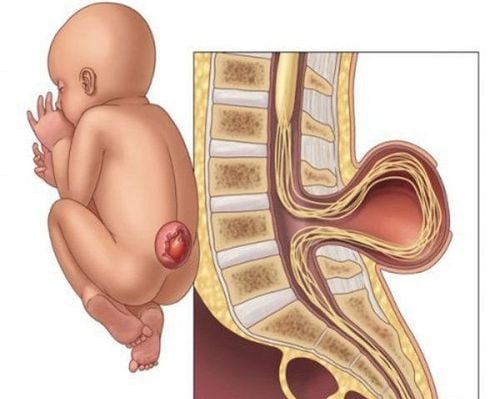This is an automatically translated article.
Lumbar puncture is a commonly used procedure to diagnose and treat conditions involving the brain and spinal cord. After the procedure, the patient may face some risks such as headache, bleeding, infection,...1. What is a lumbar puncture?
Lumbar puncture is a procedure in which a sample of cerebrospinal fluid is taken with a special needle for testing. Cerebrospinal fluid is the fluid that surrounds the brain and spinal cord. This procedure is mainly used to diagnose and treat meningitis or other diseases involving the brain and spinal cord.2. How is a lumbar puncture performed?
Usually the patient will be placed on his or her side on a bench with the knees pulled close to the chest. Sometimes a lumbar puncture can be performed when the patient is sitting, leaning forward and leaning on a pillow. Disinfect the area to be punctured with iodine or betadine alcohol followed by white alcohol, making sure to wipe off all iodine alcohol. then spray or inject a local anesthetic. Place a sterile cloth around the puncture site, locate the puncture site. For adults, often puncture in the intervertebral fissure L3-L4, L4-L5, L5-S1 (because the spinal cord ends at L2, while in children, the spinal cord can extend to L3-L4, so the puncture site usually lower

Tư thế thực hiện thủ thuật chọc dò tủy sống
Insert the needle into the midline and perpendicular to the dorsal plane, it should be perpendicular to the body axis to minimize dural tear and headache after CSF puncture When the needle is inserted about 3-4cm deep or the arm retracts If there is no CSF, insert the needle another 2-3mm, then withdraw the catheter to check again. When the needle is deflected, withdraw the needle to the subcutaneous tissue, bring the needle up to the tip to create an angle of 1500 or less and go to the right midline then reinsert the needle When the needle is placed into the cerebrospinal fluid space, the fluid pressure can be measured cerebrospinal fluid and collect the fluid into test tubes. Then re-insert the catheter before withdrawing After collecting the specimen, it is necessary to record a record (including the date and time of the procedure, the pressure of the cerebrospinal fluid, the nature, color, indications for tests, and the patient's condition). disease) After lumbar puncture, the patient should be kept in place with the head low for at least 30 minutes, the patient's vital signs and the lumbar puncture site
3. Possible risks of lumbar puncture
Headache: is the most common complication due to decreased intracranial pressure or cerebrospinal fluid drainage through the dural puncture. It can be overcome by letting the patient lie down on the bed, not resting the head high for 3-4 hours or can take pain relievers. Bacterial infection: Often due to inadequate sterility during the procedure, it can cause purulent meningitis, subdural abscess or inflammation of the disc space. Subdural hematoma: This is a rare complication, usually seen in elderly patients. Bleeding: Complications of subdural, epidural, or subarachnoid bleeding may occur, especially in those with coagulopathy or on anticoagulants.

Bác sĩ tư vấn chọc dò tủy sống tại Bệnh viện Đa khoa Quốc tế Vinmec
Vinmec International General Hospital is one of the hospitals that not only ensures professional quality with a team of leading medical doctors, modern equipment and technology, but also stands out for its examination and consultation services. comprehensive and professional medical consultation and treatment; civilized, polite, safe and sterile medical examination and treatment space.
Please dial HOTLINE for more information or register for an appointment HERE. Download MyVinmec app to make appointments faster and to manage your bookings easily.













